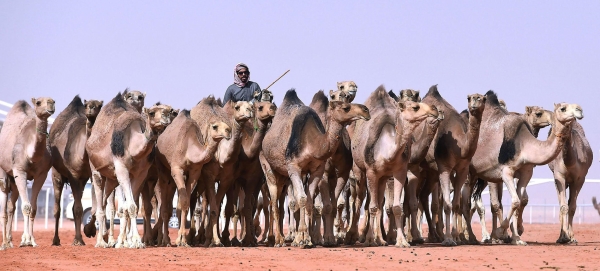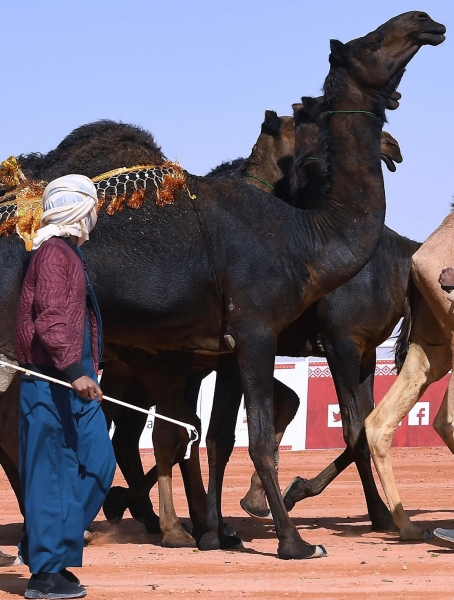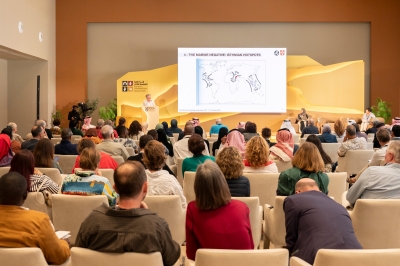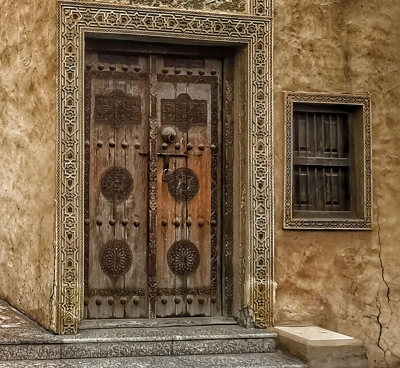

Al-Heda'a refers to a form of traditional oral expression and a means of communication between camels and their herders. It consists of an oral polyphonic expression produced by camel herders to communicate with their herds, where camels react to these calls depending on the melody and training they received from their herder in this respect.
Al-Heda'a is performed on different occasions, where it could be performed as a call for departure, a call for travel, a call for drinking, commonly known as al-Oubal, a call for gathering camels and driving them to the grazing pastures, known as al-Houbal or al-Awba, and a call for encouraging camels to speed up upon retrieving water from wells.
Historical overview of al-Heda'a
The practice of al-Heda'a extends across several provinces of the Kingdom of Saudi Arabia due to the spread of camel herding profession across a vast area of the Arabian Peninsula since ancient times. In fact, Arabs' domestication of camels began thousands of years ago to the extent that camels became an integral part of their lives, where they were used for eating, drinking, and traveling, among other purposes they were used in the desert.
The inhabitants of the Arabian Peninsula have passed down the practice of al-Heda'a from one generation to another to communicate with their camels by producing some sounds and expressions that the camel is familiar with and can respond to. Historical accounts recount that Mudar Ibn Nizar Ibn Ma'ad was the first to engage in this practice after he fell off his camel and broke his hand, where he shouted (Wa yadah! Wa yadah! - My hand! My Hand!). In fact, he had a nice voice. His camel listened to him and sped up. That was when the practice of al-Heda'a for calling camels was first introduced.
Some historical accounts mention that al-Heda'a began with articulating some sounds with a high-pitched voice, a practice known as al-Tadwiyah or al-Dawat. On the other hand, some language dictionaries noted that the camel herder would sing specific words to his camels should he want them to hurry. Such words include "haid, haid," or "hai dou, hai dou." He could also sing: "dou, dou," or "do, do", articulated with a soft [o], or even "dah, dah" with this sound still in use today along with the Rajaz meter, where these practices are more or less interchangeable and differ from one region to another.
The practice then evolved from being a mere whisper, sound articulation, or calling upon the camel into a form of sung poetry with its own method, style, and terminology. Over time, sung poetry and expressions were introduced to the practice along with metered voices, ultimately offering a blend of nice voices and charming rhymes inspired by the authentic Bedouin culture and environment.
Words used in al-Heda'a poetry
Al-Heda'a is a form of light poetry recited to lure camels. It features simple words, usually a few, ordered according to specific rules that reflect information on laws, drinking methods, departure objectives, and desert life in general. It could also communicate the herder's concerns and worries.
Al-Heda'a could be the closest representation of the simplest form of poetry, featuring two verses and two distinctive rhymes. It is often recited by two persons. However, when the bucket retrieving water from wells is rather big, it is loudly recited by four individuals. Its performance occasionally echoes in the distance, namely once performed during quiet evenings and at dawn. It is not strictly limited to one melody but could be performed with a variety of rhymes and styles that differ from one region to another. It uses melodious words that seem to touch camels, captivating them, and its verses often reflect matters encountered by herders throughout their daily lives.
Examples of al-Heda'a performed by the bedouins residing in the Arabian Peninsula include al-Houbal and the Rajaz meter, both articulated in the local dialect. Al-Heda'a refers to the poetry while waiting to retrieve the bucket as it goes up from the bottom of the well until it reaches the herders. Examples thereof include: "Siq al-quood wa himmihi yaski khawatih wa oummihi," (Drive the young camel, and encourage it to provide water for its sisters and mother) "Allah aaleik qlayeb, yajmaa khabith wa tayyeb," (You have a heart that has both the wicked and the good) "Enna zawlamin wal tamen zuhab ahlihin tammen," (If they leave, and provisions remain, their people will stay) "Ya marhaba wa irhabi bi umm al-sinam al-nabi," (Welcome, welcome to the mother of the prominent hump) "Ya shammakh al-ashayer ya mijzawat al-bayer," (O pride of the tribes, O tamer of the barren) "Sib al-kils li shiilah, kam dirhamt min leila," (Pour for the young camels at dawn, how many nights have they endured) "Milha jalilah wakhar wa in ja'a al-daham tistakhar," (A precious beauty at first, but when hardship comes, she holds back) "Ya marhaban bi umm al-dallal al-zini," (Welcome and greetings to the mother of grace and beauty) and "Barqin yilhalah kalah yinbut shutail wa riblah." (Lightning that dazzles before it sprouts seedlings and growth).
Vocal forms of al-Heda'a
Camels are known for their emotional reaction and interaction with the herder who accompanies and cares for them. In communities where al-Heda'a is practiced, camel owners are always keen to train their herds by using some of the sounds made by herders, a practice known as al-Hawbala. In other areas, such as Jazan Province, herders opt for two ways to produce the sounds used for al-Heda'a practice. These methods are al-Salik, which refers to using the herder's voice to train camels, and al-Walish, in terms of which two herders produce sounds, while one is singing and the other plays the mizmar. Herders could use other tools as well, such as a stick to wave while articulating these sounds, and another tool known as al-labid to make sounds that attract camels. Herders are keen to train their herds to enable their interactions during specific times of the day. As such, they call them to gather in the morning, call them to gather around the site dedicated to drinking water, and call them to gather at night, a practice known as al-Mirwah. Al-Heda'a is also practiced on other occasions, such as wedding celebrations, among other social occasions.
Al-Heda'a competitions
Some competitions are usually held for young herders with nice voices. Other competitions are also held, such as al-Bat'h, where al-Heda'a is practiced differently. In this respect, two herders gather both their herds, where the winner is the one whose camels and those of the other herd respond to.
Another form of contest is al-Hujaij, which is a camel race that does not feature a rider, where the camel crosses a distance of around twenty km over which the herder performs al-Heda'a to encourage his herd. In this respect, the winning herd would be the one whose camel crosses the finish line.
Places where al-Heda'a is popular
Al-Heda'a is a living heritage passed down from one generation to another. However, its practice was never exclusive to men. In fact, al-Heda'a was also known to be practiced by women in several regions of Saudi Arabia. Its practice is also not limited to a specific age segment, where even children are trained to engage in this practice from a young age. The practice of al-Heda'a is notably popular in Qassim, Jazan, Tabuk, Hafr al-Batin, AlUla, and Ramah, among other desert areas where camel breeding and care are active.
Al-Heda'a, a Saudi Intangible Cultural Heritage inscribed under the UNESCO List
On November 30, 2022, Saudi Arabia succeeded in inscribing al-Heda'a under the Representative List of the Intangible Cultural Heritage of Humanity of the United Nations Educational, Scientific, and Cultural Organization (UNESCO), during the annual session of the Intergovernmental Committee for the Safeguarding of the Intangible Cultural Heritage held in the Kingdom of Morocco.
Saudi Arabia, in collaboration with the Sultanate of Oman and the United Arab Emirates, led the submission of the joint file for inscribing al-Heda'a under the list.
Related quizzes


